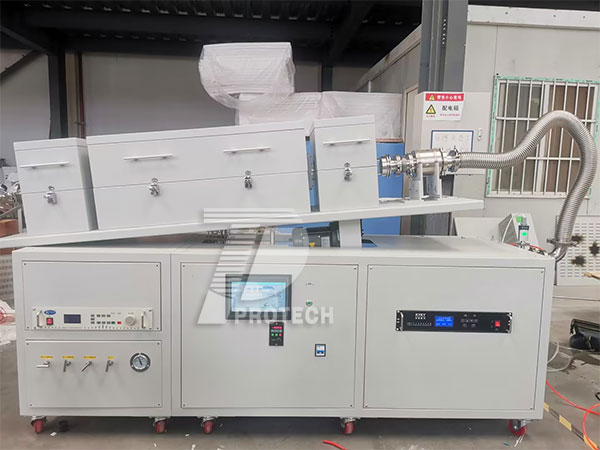


NEWS
There are various types of gases that can be introduced into the plasma enhanced chemical vapor deposition (PECVD) tube furnace. Let's take a detailed look below!
Reactive gases:
Silane (SiH ₄): Used for depositing silicon-based thin films, such as amorphous silicon, microcrystalline silicon, silicon nitride (Si ∝ N ₄), and silicon oxide (SiO ₂).
Ammonia gas (NH3): often used in conjunction with silane to deposit silicon nitride films and provide a nitrogen source.
Nitrogen (N ₂): can be used as a carrier gas or diluent gas, and can also participate in the deposition reaction of thin films such as silicon nitride.
Nitrous oxide (N ₂ O) or oxygen (O ₂): used to deposit silicon oxide films and provide an oxygen source.
Methane (CH ₄) or other hydrocarbons: used for depositing carbon based films, such as diamond-like carbon (DLC) films.
Inert gas (carrier gas/diluent gas):
Argon (Ar): commonly used as a carrier gas or diluent gas to help stabilize the plasma and regulate the partial pressure of the reaction gas.
Helium (He): It can also be used as a carrier gas and has high thermal conductivity, which helps to control the reaction temperature.
Doping gas:
Phosphine (PH ∝): used for n-type doping to prepare n-type semiconductor thin films.
Borane (B ₂ H ₆): used for p-type doping and preparation of p-type semiconductor thin films.
Boron trifluoride (BF ∝): can also be used as a p-type doping source.
Other special gases:
Hydrogen (H ₂): commonly used in reduction reactions or in combination with silane to regulate the deposition rate and properties of thin films.
Sulfur hexafluoride (SF ₆): Used in certain special processes for etching or surface treatment.
Factors influencing gas selection:
Film type: Select the corresponding reactive gas based on the required deposited film material (such as SiO ₂, Si ∝ N ₄, DLC, etc.).
Doping requirements: To prepare p-type or n-type semiconductor thin films, corresponding doping gases need to be introduced.
Process conditions: Parameters such as gas flow rate, proportion, and pressure can affect the deposition rate, quality, and performance of thin films.
Safety: Certain gases, such as silane and phosphine, are flammable, explosive, or toxic and require strict adherence to safety operating procedures.
Practical application example:
Deposition of silicon nitride thin film: Typically, silane (SiH ₄) and ammonia (NH3) are introduced, and sometimes nitrogen (N ₂) or argon (Ar) is added as a carrier gas.
Deposition of Silicon Oxide Thin Films: Typically, silane (SiH ₄) and nitrous oxide (N ₂ O) or oxygen (O ₂) are introduced.
Deposition of DLC film: Typically, methane (CH ₄) and hydrogen (H ₂) are introduced, and sometimes argon (Ar) is added as a carrier gas.

PECVD tube furnace with rotating tilt (click on the image to view product details)
In general, when using a PECVD tube furnace for coating, it is necessary to introduce different gases according to the process requirements. However, it is important to strictly follow the safety operating procedures and consult relevant technical personnel before use in order to experiment with results that better meet one's own needs!Click to learn more PECVD devices! Or click on online customer service to learn more about product information!
Leave A Message